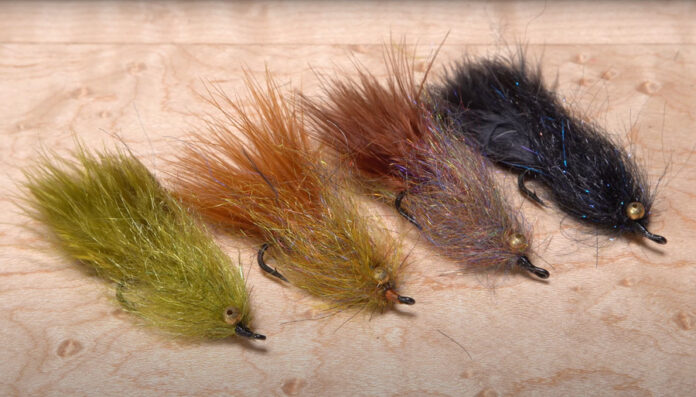The DDH Leech is one of my favorite patterns, and I’m excited that Tim Flagler of Tightline Productions has featured it in his weekly tying video. Created by Canadian angler Stu Thompson in the mid-1990s, the pattern has since been used to catch more than 80 species of fish in fresh and salt water. I’ve had great success on trout and bass using DDH Leeches of various sizes and colors, and my favorite way to fish it is as the second fly in a two-streamer rig. To learn the story of the fly and how Stu ties it, check out Pro Tips: How to Tie and Fish the Versatile DDH Leech.
In this great video, Tim walks you through his version of the DDH Leech, which alters Stu’s pattern only by using different dubbing material. (Stu uses Ultra Holographic Dubbing.) As usual, Tim shares some useful tying techniques, such as creating a fluffy dubbing noodle using a long chip clip and a dubbing loop. The result is a simple yet highly effective leech pattern that you can tie in a wide variety of sizes and colors. For instance, a copper-colored version has produced some nice Battenkill browns for me over the years. (See below.)
Hook: Heavy wire salmon/steelhead hook (here, a Dai-Riki 899), size 6.
Thread: Black, 6/0 or 140 Denier.
Eyes: Gold bead chain eyes, medium.
Tail: Olive Woolly Bugger marabou.
Body: Olive Arizona Simi Seal dubbing.
Head: Tying thread.
Adhesive: Head cement (here, Sally Hansen Hard-As-Nails).
Tools: Chip clip, dubbing whirl, plunger-style hackle pliers, dubbing needle, and dubbing brush.

Credit: Source link































